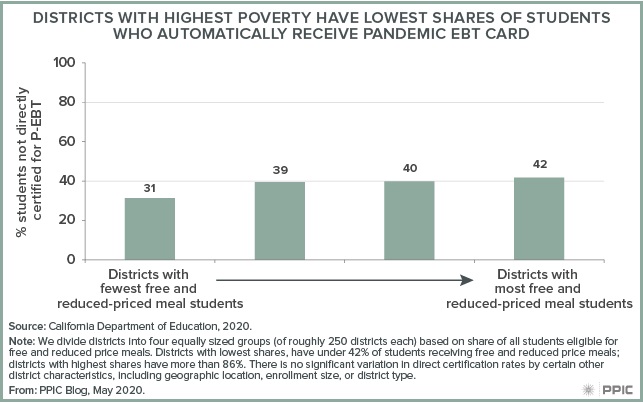
|
|

|
|
| April 20, 2024 |
|
School districts struggle with student food insecurity 
SACRAMENTO – (INT) - Food insecurity—either concerns around having enough food or outright hunger—has increased sharply across California.
Nationally, among children age 12 and under, the rate is up 14 points—from about 3% in 2018 to 17% in April 2020. During the ongoing COVID-19 school closures, even large districts appear to be serving fewer free and low-cost meals than before the pandemic, while rural or small districts face their own challenges in reaching students. Typically about 3.7 million California students, or 60%, qualify for free or reduced-price meals, a number that likely shot up under shelter-in-place orders. When classes are in session, these students may receive most of their food at school. Since schools closed in March, districts have set up more than 4,700 grab-and-go sites to continue providing meals to students, the Public Policy Institute of California found. Many districts provide meals to everyone under the age of 18. San Diego Unified is distributing one extra breakfast and lunch to cover nutrition needs over weekends; other districts, including Twin River Unified in north Sacramento, are providing dinner along with breakfast and lunch. Story Date: August 15, 2020
|